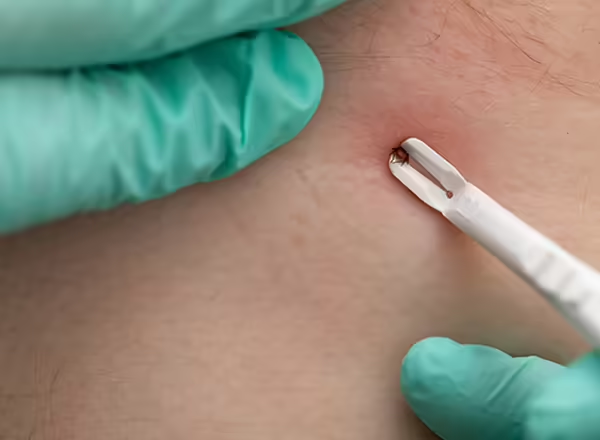
If you find a tick attached to an animal or a person, you should remove it immediately. Use fine-tipped tweezers if at all possible. If they are not available, improvise by shielding your fingers with tissue paper, a foil-covered gum wrapper, or plastic sandwich bag.
Grasp the tick as close to the skin as possible, pulling upward with steady, even pressure. Do not twist the tick as you remove it – this may cause the tick’s mouthparts to remain in the skin, which increases the risk of infection. Do not try to suffocate the tick with alcohol soaked cotton – this will cause the tick to regurgitate while its mouthparts are still in the skin, which also increases the risk of infection. Do not use hot match heads or petroleum jelly for tick removal.
After removing the tick, wash the affected area with soap and water. Then disinfect the bite with a topical antiseptic. Put the tick in a zip-top bag and seal it closed. Give the bagged tick to your veterinarian or doctor for examination.